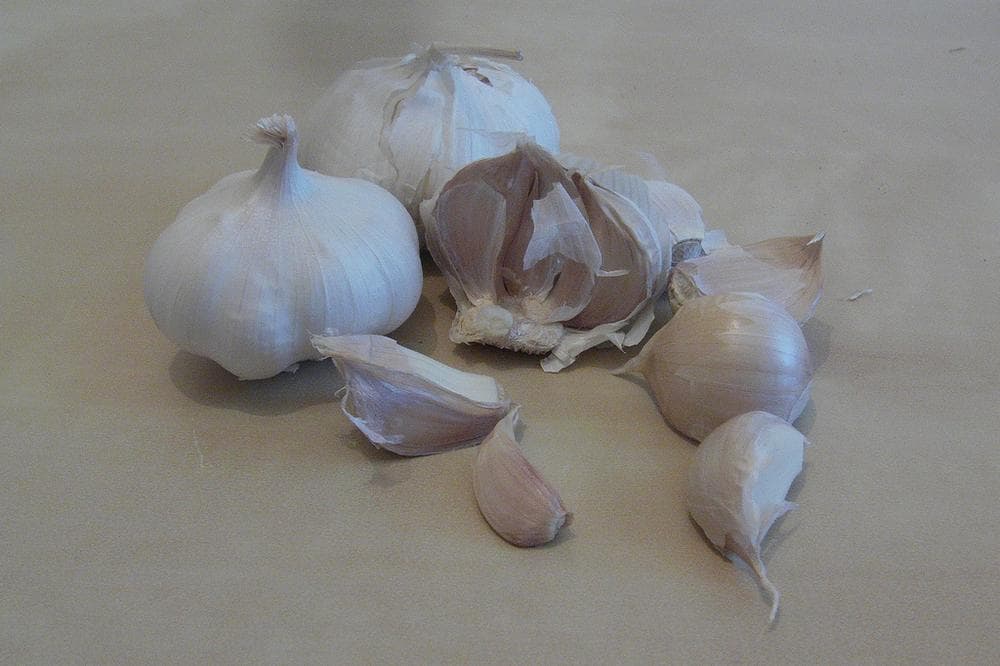Advertisement
More Evidence For 'Stinking Rose' Garlic's Cancer-Fighting Potential
Guest Contributor

News this good, not to mention this tasty, is rare in medicine, but that’s the conclusion of a large Chinese study published recently in Cancer Prevention Medicine.
The researchers compared 1,424 lung cancer patients with 4,543 healthy adults and asked them about their lifestyle and dietary choices. Granted, just asking people to recall their own behavior is hardly the ideal form of research. (Far more informative are studies that randomly divide people into two groups, give one group a treatment and the other group a placebo without revealing who’s getting what, and then compare the results.)
That said, the results from Jiangsu Center for Disease Control and Prevention in Nanjing are noteworthy, said John Milner, who has studied garlic chemistry for decades.
“This is additional evidence that garlic has some significant health benefits.” Milner, director of the Human Nutrition Center at the Agricultural Research Service at the United States Department of Agriculture, told me in a telephone conversation this week.
The new data from China fit with a longstanding body of research on garlic, which is high in sulphur-containing compounds, as a potential cancer-fighter. Sometimes called the “stinking rose,” garlic was first mentioned in the medical literature in 1550 B.C. in an Egyptian papyrus, then got a further whiff of credibility in 1858 when Louis Pasteur discovered that its juice kills bacteria.
Much of the biological action in garlic comes from its breakdown products, or metabolites, of allicin, which are released when raw garlic is chopped or crushed.
In the body, allicin and its breakdown products have numerous functions – reducing inflammation, combatting harmful oxygen molecules called free radicals, acting as a natural blood thinner, fighting bacteria, blocking cancer-causing agents (carcinogens), slowing down the rapid cell division that is the hallmark of cancer, enhancing DNA repair and triggering a phenomenon called apoptosis (cell death).
Interestingly, there are fewer health benefits from cooked garlic. However, “if you chop garlic and let it sit for 10 to 15 minutes, the active compounds are formed, then it doesn’t matter if you heat it,” Milner said. “Heating is only bad if you heat the [chopped] garlic right away.”
In 2009, researchers studying human urine samples found that consuming 3 to 5 grams a day blocked the creation of cancer-causing agents, carcinogens, called nitrosamines, which are found in some processed meats and are also formed in the body during normal metabolism.
Technically called allium sativum, garlic is in the class of plants that includes onions, chives, leeks and scallions, all of which have medicinal benefits like garlic, though these other plants have not been studied for their potential health effects as thoroughly as garlic.
According to the National Cancer Institute (part of the National Institutes of Health), preliminary studies suggest that eating garlic may reduce the risk of certain cancers, especially those on the gastrointestinal tract. These include cancers of the stomach, colon, esophagus and pancreas.
In a 2006 European study that involved people from 10 countries, higher intake of garlic and onions were linked with a lower risk of intestinal cancer. An older study (from 1994) called the Iowa Women’s Study had already showed that women who ate the most garlic had a 50 percent lower risk of colon cancer compared to those who ate the least.
Chinese studies in 1999, 2002 and 2005 have linked high consumption of allium-containing vegetables to lower risks of esophageal and stomach cancer, prostate cancer and stomach cancer, respectively. A 2005 San Francisco Bay-area study found that pancreatic cancer risk was 54 percent lower in people who ate larger amounts of garlic compared to those who ate less.
While these and other epidemiological studies comparing the dietary habits of large groups of people strongly suggest an anti-cancer effect from garlic and its vegetable cousins, proving that connection in interventional studies has been more difficult.
In one 2004 Chinese study, for instance, an extract of garlic (called allitridum) plus selenium seemed to reduce the risk of tumors in general and stomach cancer in particular. But a 2006 Chinese study interventional study found no such risk reduction in stomach cancer.
Complicating garlic research is the fact that some researchers use raw garlic while others various supplements or extracts; some supplements have not been thoroughly tested and may vary considerably in their content.
Ideally, said Milner, eating one-third of a garlic clove a day (about 1 to 3 grams) is a reasonable goal. “The bottom line,” he said, “is that, to get the benefits, that’s enough. You don’t have to go to exaggerated amounts.”
Although garlic is usually safe, it can interfere with certain medications, in particular anti-viral medications used for HIV/AIDS. Since garlic is also a natural blood thinner, pregnant women should probably not consume too much garlic, the National Cancer Institute website notes, nor should people taking prescription blood thinners and those about to undergo surgery.
Judy Foreman, a longtime syndicated health columnist, is the author of the forthcoming book “A Nation in Pain – Healing Our Biggest Health Problem,” from Oxford University Press.
This program aired on August 16, 2013. The audio for this program is not available.